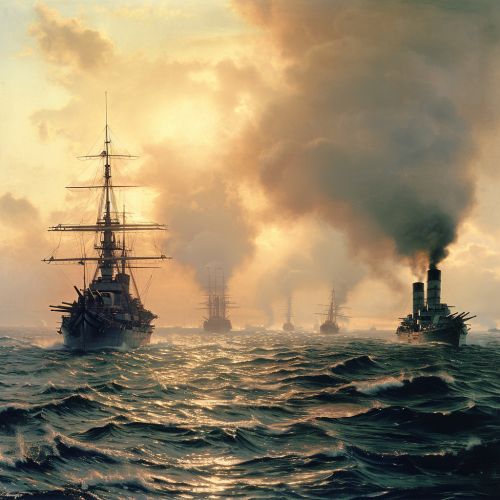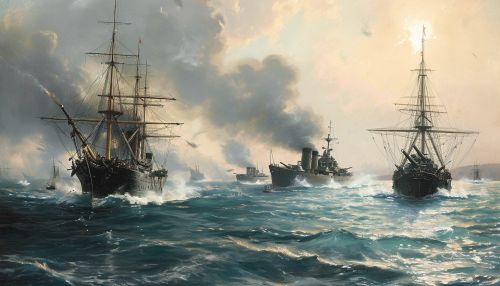Battle of Jutland
Background
The Battle of Jutland was a naval battle fought between the British Royal Navy's Grand Fleet, under Admiral Sir John Jellicoe, and the Imperial German Navy's High Seas Fleet, under Vice-Admiral Reinhard Scheer, during the First World War. The battle was fought from 31 May to 1 June 1916 in the North Sea, near the coast of Denmark's Jutland Peninsula. It was the largest naval battle and the only full-scale clash of battleships in that war.


Prelude to the Battle
The British Grand Fleet's aim was to draw out and destroy the German High Seas Fleet. The British had numerical superiority, with 28 battleships to the Germans' 16. The Germans, however, had a plan to try to provoke a portion of the Grand Fleet into battle where it could be isolated and destroyed before the rest of the fleet could assist.
The Battle
The battle began on 31 May, with the British and German battlecruiser forces exchanging fire, resulting in the sinking of the British battlecruiser HMS Indefatigable and the German battlecruiser SMS Lützow. The British fleet, having been divided by the German plan, was unable to effectively engage the German fleet until the late afternoon. By this time, the German fleet had turned away to escape the superior British force.
Aftermath
The Battle of Jutland was a tactical victory for the German High Seas Fleet, as they sank more ships and killed more sailors. However, it was a strategic victory for the British Grand Fleet. The German fleet remained blockaded in port for the remainder of the war, and the British maintained control of the North Sea.
Significance
The Battle of Jutland was the last major battle in world history fought primarily by battleships. It was also the largest naval battle of the First World War, involving 250 ships and around 100,000 men. The battle demonstrated the power of modern naval artillery and the vulnerability of ships to this firepower.
